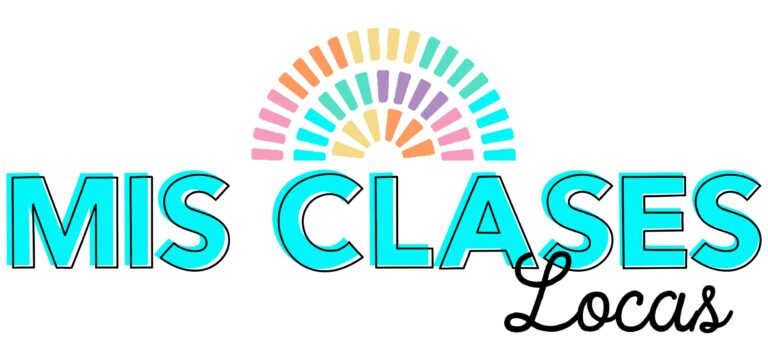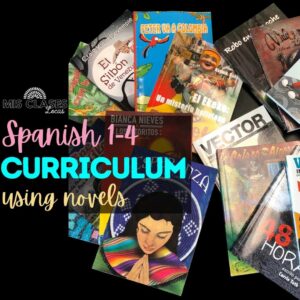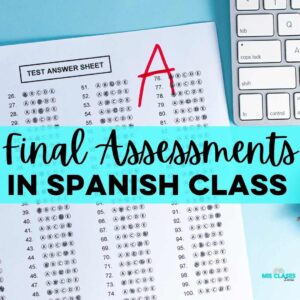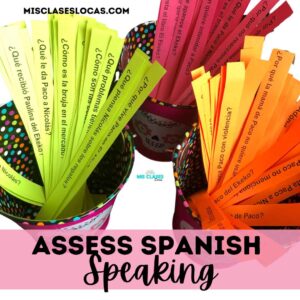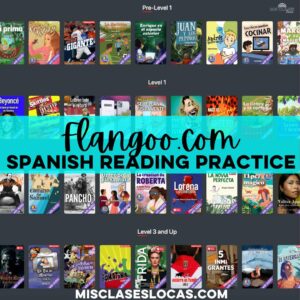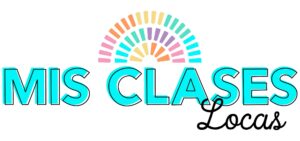Inside: How to Assess a Novel in a comprehensible input class. Assessing a novel in Spanish class. Ideas to mix up Spanish class assessments.
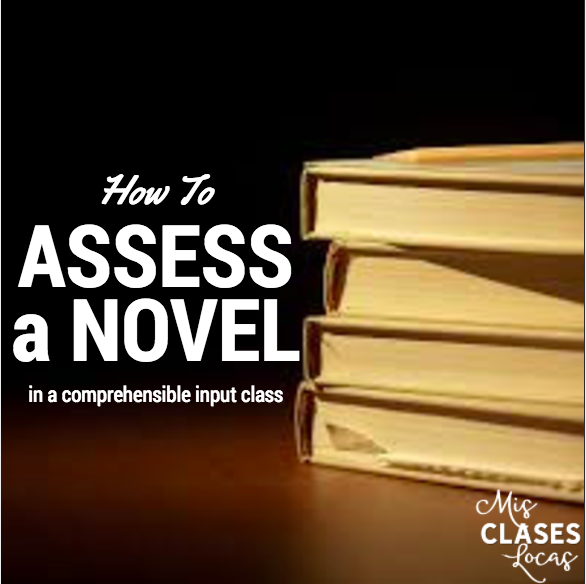
What makes for successful language assessment with novels?
I was recently asked a great question by a reader about assessment. Libby’s question was, “In your opinion, what makes for successful language assessment with novels?”
In my opinion, successful assessments of novel units allow students to show what they know about the novel, and the culture surrounding it. In my classes, these assessments are often performance-based assessments, evaluated using a language proficiency scale.
Most often we will end a novel with both a presentational writing assessment and an interpersonal speaking assessment. I like to keep these relatively open-ended, giving students able opportunity to show what they know.
This is opposed to having a typical test with multiple choice and true/false questions that sometimes try and trick students into second guessing what they actually know and remember. As a reminder, I am not an expert in teaching or assessing novels, just a teacher who is learning, growing, and figuring out what works and what does not for my students. Read more about How to Teach Comprehensible Spanish Books.
Keeping that in mind here are some assessments that I have given at the conclusion of various novel units.
Presentational Writing & Interpersonal Speaking Assessments
The most common way I have assessed novels is by having both a presentational writing and an interpersonal speaking assessment at the end of a unit. My grade book is set up according to modes (Interpersonal, Interpretive, and Presentational), so this allows two separate opportunities to show understanding of the novel unit.
I have done this for the following novels: Tumba, Felipe Alou, Esperanza (year 2) and Cajas de Cartón. This is how assessment week would typically be set up:
Review the novel
using communicative games and activities
Interpersonal Speaking Assessments
This blog post has more info about mixing up types of assessment Speaking Activities
Typically, I randomly draw two students to come back to my desk at a time. It has to be random, because if two people who practiced together are assessed that is presentational, not interpersonal, since there is not any negotiation of meaning.
They will have been given a prompt the week before, but it is usually something like asking and answering questions about the novel and unit. There might be authentic pictures as well on my desk to draw inspiration from.
They come back without any notes, sit in a comfy chair, and I just listen to them talk for the allotted time. If needed, I may jump in to help lower-level students keep the conversation going. For support they might have my Spanish Novel Conversation Cards
They know that there is a proficiency level that they are trying to work towards, as I grade them using a performance-based rubric. For example A-Intermediate Low, B-Novice High, C-Novice Mid, below that try again. Students are usually terrified for their first one because it is so different from assessments in most classes, but then realize they would much rather have this open-ended assessment and consider it easy, “you just listen and talk in Spanish!”
What do others do during Speaking Assessments?
The rest of the class has a list of tasks projected on the board that they should be working on quietly, so I can hear the assessments.
This includes preparing to speak, preparing for the writing later in the week, free reading in Spanish silently, or working on choice homework. You may ask is it “fair” that some have more time to prepare to speak? I draw their book numbers randomly, so it is as fair as the lottery. They know to be ready on that day, and most would rather go right away to get it over with, so they can move on and do something else.
Interpersonal Speaking Assessments – day 2 (if needed)
Due to most of my classes being under 20 students, I can usually get them all done in two days. If you have larger classes, you can record them and listen later. If we finish early, we may do extra preparation for the writing portion, such as a practice free write.
Presentational Writing Assessments
The students will have been given some ideas in advance of big-picture topics that may be given as prompts. Students normally complete them alone, with only a pencil and the prompt paper, and write as much as they can in Spanish. There are usually a couple of prompts (that may have multiple options) that cover the big themes and cultural ideas from the novel unit.
Once again, they are asked to show what they know, that they read the book, and to apply it. Obviously depending on the proficiency level goal, the prompts will vary in difficulty from level to level.
Experiential Assessment for a novel in Spanish class
 |
| This student used an old ceiling tile to make this stunning art. Even better she used Spanish to describe the deep meaning and symbols included. |
My first time teaching La Calaca Alegre we did a presentational writing assessment and interpersonal speaking. But, last year’s class asked if we could do a project to end the year instead.
I used the great idea from Carrie Toth in the teacher’s guide to have a “Gallery Day.” The students created projects that represented their identity, which was the main theme of the book. We then had a gallery walk day, where all projects were displayed in the room, each student explained their project, and everyone else will asked questions.
This combined both a presentational assessment (the students describing their project and how it related to the book) and interpersonal (students asking and answering questions during the gallery walk). To make it more fun you can have light snacks like an art gallery event on that day. The students liked doing something different, and we were able to have some pretty deep discussions about the students’ art, identity, and the book.
Choice Board Assessment for a Novel
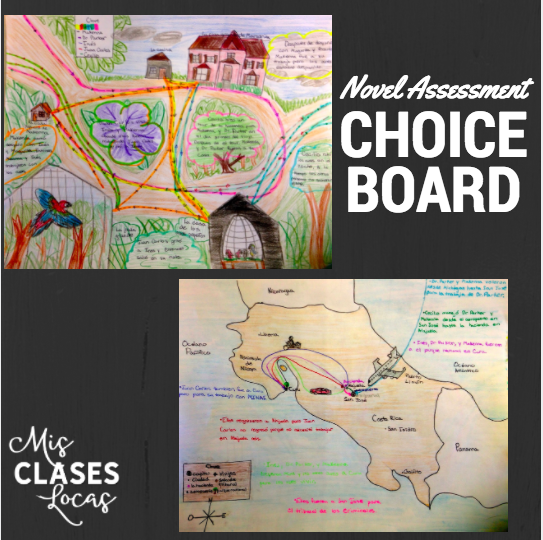 |
| Student projects for Robo en la noche |
Another option to assess a novel is a choice board. When teaching Robo en la Noche, we used two assessments, the speaking assessment found in the teacher guide.
I modified the version of this Choice Board created by the author Kristy Placido. Choice boards allow a lot of possible differentiation, as well as give students control over how they show their learning. When completing these projects, I usually have a little show and tell day where students do a quickie presentation of what they did, and then everyone can play the games that were created (since that is always a popular choice).
I have also used a choice board for the novel Esperanza. In my first year teaching the novel we used an amazing choice board created by Sra. Dentlinger. At my particular school if you want high-quality projects, you need to provide able class time, so to complete this you must have enough time for this particular assessment choice.
Project Based Assessment for a Novel in Spanish
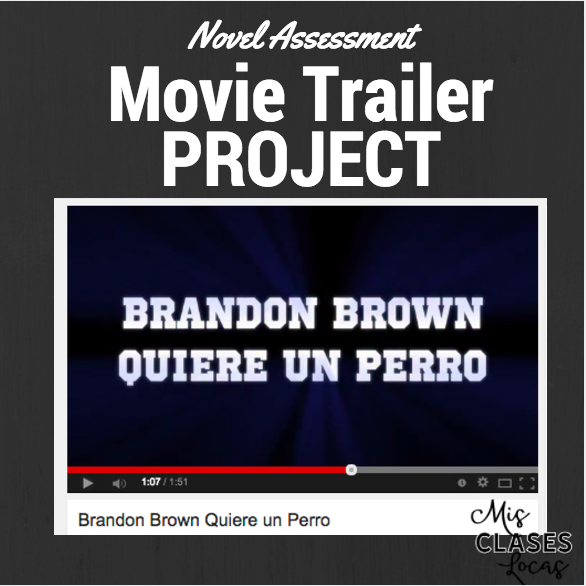
There are many true project-based assessments that you could complete at the conclusion of a novel. I have seen many teachers work with their students to work on actual global issues and real-world situations.
While I have not done anything that intense, one project that novice students have completed after reading Brandon Brown Quiere un Perro, was creating a movie trailer. You can see more information in this post. You have to remember that this novel is often read with level one students, so your projects need to reflect what a novice-level learner can do.
Traditional Assessment over a Novel
In the teacher’s guide for La Llorona de Mazatlán, there is a traditional assessment included. This worked really well for a portion of an end of the semester exam when I did not have any time to make anything myself. It is unfortunate that such a quick turnaround is often needed for end of semester exams, since a traditional exam alone is a hard judge of a language performance level.
I added a presentational writing component to the traditional test, which allowed students to reflect on the book and maybe make up for poor test-taking skills in the other section.
How do YOU assess novels? Please let me know in the comments!
Want to learn more about teaching with novels?
Before you start…
- Research & Find Funding for novels in Spanish class
- Organize your novels
- 5 Tips for Teaching with Novels
- How to teach your 1st novel
- Teaching a Novel 101 – SSS
Teaching Whole-Class Novels
- How to Teach Comprehensible Spanish Books
- how to teach a novel – a typical day.
- 20 activities for teaching with novels.
- post-reading ideas
- Mix it Up! Reading TPRS novels as a class
- How to Assess a Novel
Other Ways to Teach with Novels
Ideas for specific Whole-Class Novels
(Sorted from easiest to hardest)
- El capibara con botas.
- Brandon Brown quiere un perro.
- Tumba
- Peter va a Colombia.
- El Silbón de Venezuela.
- El Ekeko.
- Esperanza.
- Fiesta Fatal.
- Bianca Nieves
- Robo en la Noche
- Noche de Oro.
- Felipe Alou
- Frida Kahlo.
- Problemas en Paraíso.
- La Llorona de Mazatlán
- Vidas Impactantes.
- Vida y Muerte en la Mara Salvatrucha.
- Vector.
- La Calaca Alegre.
- Cajas de Cartón
